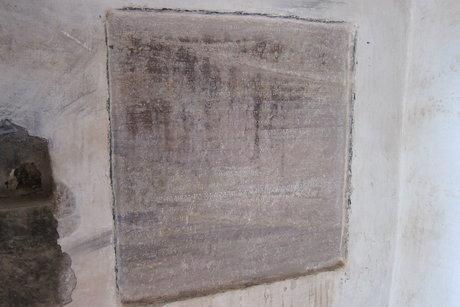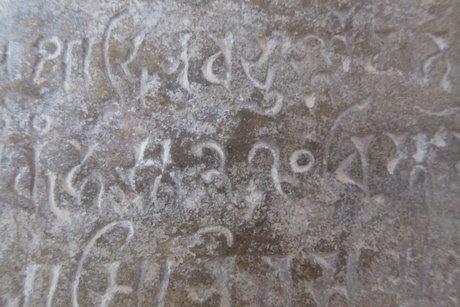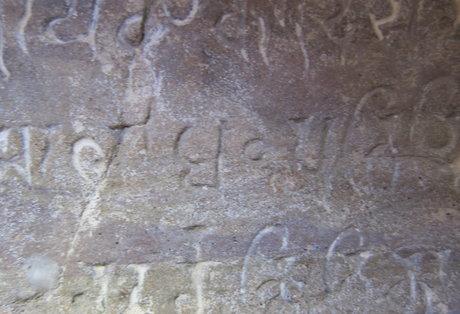What role did Eastern religions play in the foundation of our modern number system?
Alex Bellos
Source http://www.theguardian.com/science/alexs-adventures-in-numberland/2013/oct/07/mathematics1

The number 270 from a ninth century inscription in Gwalior, India: evidence that Arabic numerals are actually Indian in origin. Photograph: Alex Bellos
What has India given to the world?
Nothing.
The mathematical concept of zero emerged in India about one and a half thousand years ago, and this summer I travelled there to visit a temple where the oldest known zero symbols are written on an inside wall.
About five hours by train south of New Delhi is Gwalior, a city overlooked by an impressive fort.

Gwalior fort. Photo: Alex Bellos
On the path up towards the fort, as you approach the top, there is a tiny temple.
I walked inside to have a look at a plaque that dates from the Indian year equivalent to 875/876AD.

Temple dedicated to Vishnu, on the path up to Gwalior fort. Photo: Alex Bellos
The inscription contains two instances of the symbol zero: in the number '270', referring to a piece of land of size 270 x 187 hastas, where hasta is a unit of length, and in the number "50", referring to a daily gift of 50 garlands of flowers.
You will definitely recognize the zero – it is a circle, just like the symbol we use today.
In fact, the 2 and the 7 are also similar to our modern 'Arabic' numerals. The Gwalior inscription is documentary evidence that Arabic numerals actually originated in India.

Plaque on the wall inside the temple. Photo: Alex Bellos
The Indian number system was adopted all over the world because it was superior to all other systems, and this is because of two main reasons: "place value", and zero.
Place value is the idea that digits have different values depending on their position in a number. For example, in the number 22, the left 2 represents twenty and the right 2 represents two.

The number 270 is in the middle of the image. Photo: Alex Bellos
India was not the only civilization to have a place value number system. Babylon and China did too.
But India revolutionized numbers by adding the second piece of the jigsaw: the number zero.
Place value systems require a strategy to describe the case when there is nothing in a position. The Babylonians used a marker to represent nothing; the Chinese used a space to represent nothing.
Only the Indians introduced a symbol, 0, and treated it as if it was a normal digit just like all the others from 1 to 9. Invention of the number zero was possibly the greatest conceptual leap in the history of mathematics.
But why did the Indians make this leap and not China or Babylon?
My trip to India, for a BBC radio documentary, was to investigate why this was the case.
India made another contribution to world culture as well as zero: the idea of nirvana, the transcendent state of "nothingness", when you are liberated from suffering and desires.
In fact, the word used in philosophical texts to mean nothing, or the void, is "shunya", the same word later used to mean zero.
For George Gheverghese Joseph, a maths historian at the University of Manchester, the invention of zero happened when an unknown Indian mathematician about two thousand years realized that "this philosophical and cultural concept would also be useful in a mathematical sense."
Renu Jain, professor of mathematics at Jiwaji University in Gwalior, was my guide at the temple. She agreed that Indian ideas of spiritual nothingness led to mathematical zero. "Zero denotes nothing. But in India it was derived from the concept of shunya. Shunya means a sort of salvation," she said. "When all our desires are nullified, then we go to nirvana or shunya or total salvation."
In the modern world it is common to see religion and science as always in conflict. Yet in ancient India, one cannot untangle mathematics and mysticism.

The number 50 is in the middle of the image. Photo: Alex Bellos
Zero emerged as a result of spiritual as well as numeral thinking.